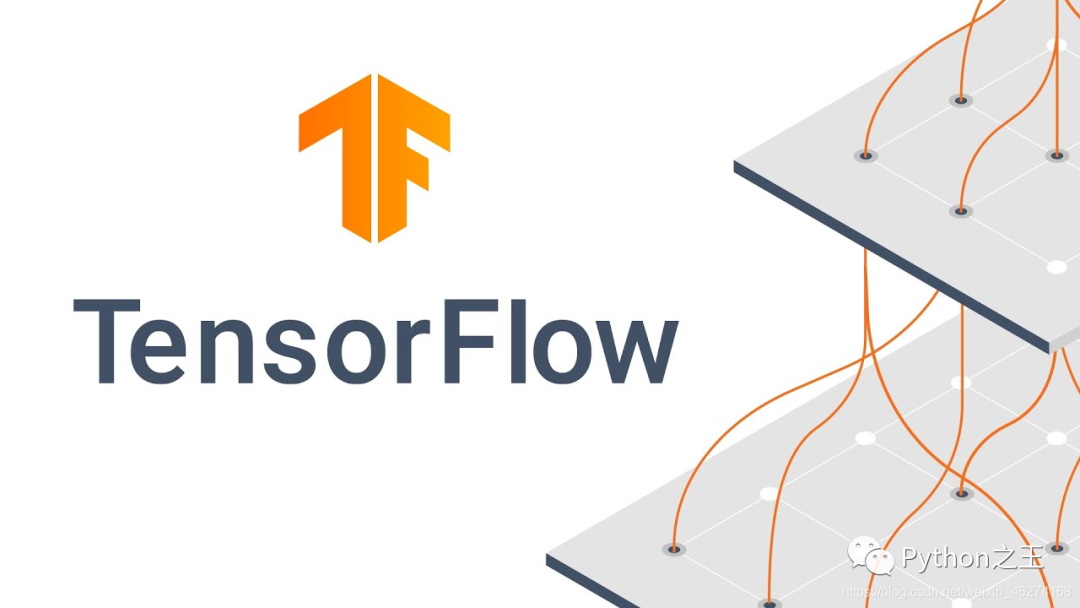TensorFlow2 一小时学会基本操作 1
https://iamarookie.blog.csdn.net/article/details/117591977
TensorFlow2 数据操作基础
概述
TensorFlow2 的基本操作和 Numpy 的操作很像. 今天带大家来看一看 TensorFlow 的基本数据操作.

创建数据
详细讲解一下 TensorFlow 创建数据的集中方法.

创建常量
tf.constant() 格式为:
tf.constant(value,dtype,shape,name)
参数:
-
value: 常量值- dtype: 数据类型- shape: 表示生成常量数的维度- name: 数据名称 例子:
# 创建常量1
c1 = tf.constant(1)
print(c1)
# 创建常量, 类型为bool
c2 = tf.constant([True, False])
print(c2)
# 创建常量1, 类型为float32, 大小为3*3
c3 = tf.constant(0.1, shape=[2, 2])
print(c3)
# 创建常量, 类型为string字符串
c4 = tf.constant("Hello World!")
print(c4)
输出结果:
tf.Tensor(1, shape=(), dtype=int32)
tf.Tensor([ True False], shape=(2,), dtype=bool)
tf.Tensor(
[[0.1 0.1]
[0.1 0.1]], shape=(2, 2), dtype=float32)
tf.Tensor(b'Hello World!', shape=(), dtype=string)
创建数据序列
格式:
range(start, limit, delta=1, dtype=None, name='range')
参数:
-
start: 开始位置- limit: 序列的上限- delta: 相当于 Numpy 的 step, 步长- detype: 数据类型- name: 数据名称, 默认为 “range” 例子:
# 创建数字序列
r1 = tf.range(4)
print(r1)
输出结果:
tf.Tensor([0 1 2 3], shape=(4,), dtype=int32)
创建图变量
格式:
tf.Variable.init(initial_value, trainable=True, collections=None, validate_shape=True, name=None)
参数:
|参数名称|参数类型|参数含义 |------ |initial_value|所有可以转换为 Tensor 的类型|变量的初始值 |trainable|bool|如果为 True, 会把它加入到 GraphKeys.TRAINABLE_VARIABLES, 才能对它使用 Optimizer |collections|list|指定该图变量的类型, 默认为 [GraphKeys.GLOBAL_VARIABLES] |validate_shape|bool|如果为 False, 则不进行类型和维度检查 |name|string|数据名称
例子:
# 创建图变量
v1 = tf.Variable(tf.range(6))
print(v1)
print(isinstance(v1, tf.Tensor)) # False
print(isinstance(v1, tf.Variable)) # True
print(tf.is_tensor(v1)) # True
输出结果:
False
True
True
tf.zeros
tf.zeros 可以帮助我们创建一个所有参数为 0 的 tensor 对象. 类似于 np.zeros.

格式:
tf.zeros(shape, dtype=tf.dtypes.float32, name=None)
参数:
-
shape: 数组的形状- dype: 数据类型, 默认为 float32- name: 数据名称 例子:
# 创建参数为0的tensor
z1 = tf.zeros([1])
print(z1)
z2 = tf.zeros([3, 3])
print(z2)
输出结果:
tf.Tensor([0.], shape=(1,), dtype=float32)
tf.Tensor(
[[0. 0. 0.]
[0. 0. 0.]
[0. 0. 0.]], shape=(3, 3), dtype=float32)
tf.ones
tf.ones 用法和 tf.zeros 一样, 可以帮助我们创建一个所有参数为 1 的 tensor 对象.
tf.ones(shape, dtype=tf.dtypes.float32, name=None)
参数:
-
shape: 数组的形状- dype: 数据类型, 默认为 float32- name: 数据名称 例子:
# 创建参数为1的tensor
o1 = tf.ones([1])
print(o1)
o2 = tf.ones([3, 3])
print(o2)
输出结果:
tf.Tensor([1.], shape=(1,), dtype=float32)
tf.Tensor(
[[1. 1. 1.]
[1. 1. 1.]
[1. 1. 1.]], shape=(3, 3), dtype=float32)
tf.zeros_like
tf.zeros_like 可以帮我们创建一个与给定 tensor 类型大小一致的 tensor. 类似 np.zeros_like.
格式:
tf.zeros_like(tensor, dype=None, name=None)
参数:
-
tensor: 传入的 tensor- dype: 数据类型, 默认为 float32- name: 数据名称 例子:
# tf.zeros_like
t1 = tf.range(6)
z1 = tf.zeros_like(t1)
print(z1)
输出结果:
tf.Tensor([0 0 0 0 0 0], shape=(6,), dtype=int32)
tf.ones_like
格式:
tf.ones_like(tensor, dype=None, name=None)
参数:
-
tensor: 传入的 tensor- dype: 数据类型, 默认为 float32- name: 数据名称 例子:
# tf.ones_like
t1 = tf.range(6)
o1 = tf.ones_like(t1)
print(o1)
输出结果:
tf.Tensor([1 1 1 1 1 1], shape=(6,), dtype=int32)
tf.fill
tf.fill 可以帮助我们创建一个指定形状和内容的 tensor.
格式:
tf.fill(shape, value, name=None)
参数:
-
shape: 数组的形状- value: 填充的值- name: 数据名称 例子:
# tf.fill
f1 = tf.fill([2, 2], 0)
print(f1)
f2 = tf.fill([3, 3], 6)
print(f2)
输出结果:
[[0 0]
[0 0]], shape=(2, 2), dtype=int32)
tf.Tensor(
[[6 6 6]
[6 6 6]
[6 6 6]], shape=(3, 3), dtype=int32)
tf.gather
tf.gather: 根据索引从参数轴收集切片.
格式:
tf.gather(
params, indices, validate_indices=None, axis=None, batch_dims=0, name=None
)
参数:
-
params: 传入的张量- indices: A Tensor. types 必须是: int32, int64. 里面的每一个元素大小必须在 [0, params.shape[axis]) 范围内- axis: 维度, 默认为 0 例子:
input =[ [[[1, 1, 1], [2, 2, 2]],
[[3, 3, 3], [4, 4, 4]],
[[5, 5, 5], [6, 6, 6]]],
[[[7, 7, 7], [8, 8, 8]],
[[9, 9, 9], [10, 10, 10]],
[[11, 11, 11], [12, 12, 12]]],
[[[13, 13, 13], [14, 14, 14]],
[[15, 15, 15], [16, 16, 16]],
[[17, 17, 17], [18, 18, 18]]]
]
output=tf.gather(input, [0,2],axis=0)
输出结果:
tf.Tensor(
[[[[ 1 1 1]
[ 2 2 2]]
[[ 3 3 3]
[ 4 4 4]]
[[ 5 5 5]
[ 6 6 6]]]
[[[13 13 13]
[14 14 14]]
[[15 15 15]
[16 16 16]]
[[17 17 17]
[18 18 18]]]], shape=(2, 3, 2, 3), dtype=int32)
tf.random

正态分布
tf.random.normal 可以帮我们创建随机数服从正态分布.
格式:
tf.random.normal(
shape, mean=0.0, stddev=1.0, dtype=tf.dtypes.float32, seed=None, name=None
)
参数:
-
shape: 张量的形状- mean: 正态分布的均值, 默认为 0.0- stddev: 正态分布的标准差, 默认为 1.0- dtype: 数据类型, 默认为 float32- seed: 随机数种子- name: 数据名称 例子:
# tf.normal
n1 = tf.random.normal([2, 2], mean = 1, stddev=1, seed=0)
print(n1)
输出结果:
tf.Tensor(
[[0.60084236 3.1044393 ]
[1.1710722 1.5465181 ]], shape=(2, 2), dtype=float32)
均匀分布
tf.random.uniform 可以帮我们创建随机数服从均匀分布. 格式:
tf.random.uniform(
shape, minval=0, maxval=None, dtype=tf.dtypes.float32, seed=None, name=None
)
参数:
-
shape: 张量的形状- minval: 均匀分布的最小值, 默认为 0- maxvak: 均匀分布的最大值- dtype: 数据类型, 默认为 float32- seed: 随机数种子- name: 数据名称 例子:
# tf.uniform
u1 = tf.random.uniform([2, 2], minval=0, maxval=1)
print(u1)
输出结果:
tf.Tensor(
[[0.7382153 0.6622821 ]
[0.22840345 0.09706533]], shape=(2, 2), dtype=float32)
打乱顺序
tf.random.shuffle 可以帮助我们打乱张量的顺序.
格式:
tf.random.shuffle(
value, seed=None, name=None
)
参数:
-
value: 要被打乱的张量- seed: 随机数种子- name: 数据名称 例子:
# tf.shuffle
s1 = tf.random.shuffle(tf.range(10))
print(s1)
输出结果:
tf.Tensor([1 7 3 9 2 6 8 5 4 0], shape=(10,), dtype=int32)
获取数据信息

获取数据维度
tf.rank 的用法和 np.ndim 基本一样.
格式:
rank(input, name=None) # 类似np.ndim
参数:
-
input: 传入的张量- name: 数据名称 例子:
# 获取张量维度
t = tf.constant([[[1, 1, 1], [2, 2, 2]], [[3, 3, 3], [4, 4, 4]]])
print(tf.rank(t))
输出结果:
tf.Tensor(3, shape=(), dtype=int32)
数据是否为张量
格式:
tf.is_tensor(input)
参数:
-
input: 传入的张量 例子:
# 判断是否为张量
a = tf.constant([1, 2, 3])
b = tf.constant([True, False, False])
c = tf.constant("Hello World")
d = np.arange(6)
print(a)
print(tf.is_tensor(a))
print(b)
print(tf.is_tensor(b))
print(c)
print(tf.is_tensor(c))
print(d)
print(tf.is_tensor(d))
输出结果:
tf.Tensor([1 2 3], shape=(3,), dtype=int32)
True
tf.Tensor([ True False False], shape=(3,), dtype=bool)
True
tf.Tensor(b'Hello World', shape=(), dtype=string)
True
[0 1 2 3 4 5]
False
数据转换

转换成张量
格式:
tf.convert_to_tensor(value, dtype=None, dtype_hint=None, name=None)
参数:
-
value: 需要转换的值- dtype: 数据类型- dtype_hint: 当 dtype 为 None 时的备选方案- name: 数据名称 例子:
# 转换成张量
array = np.arange(6)
print(array.dtype)
array_tf = tf.convert_to_tensor(array)
print(array_tf)
输出结果:
int32
tf.Tensor([0 1 2 3 4 5], shape=(6,), dtype=int32)
转换数据类型
格式:
cast(x, dtype, name=None)
参数:
-
x: 输入的值- dtype: 数据类型- name: 数据名称 例子:
# 装换数据类型
array_tf = tf.constant(np.arange(6))
print(array_tf)
array_tf = tf.cast(array_tf, dtype=tf.float32)
print(array_tf)
tf_bool = tf.cast(tf.constant([False, True]), dtype=tf.int32)
print(tf_bool)
输出结果:
tf.Tensor([0 1 2 3 4 5], shape=(6,), dtype=int32)
tf.Tensor([0. 1. 2. 3. 4. 5.], shape=(6,), dtype=float32)
tf.Tensor([0 1], shape=(2,), dtype=int32)
转换成 numpy
例子:
# tensor转换成numpy
array_tf = tf.ones([2,2])
array_np = array_tf.numpy()
print(array_np)
输出结果:
[[1. 1.]
[1. 1.]]


Python“宝藏级”公众号【Python之王】专注于Python领域,会爬虫,数分,C++,tensorflow和Pytorch等等。
近 2年共原创 100+ 篇技术文章。创作的精品文章系列有:
日常收集整理了一批不错的 Python 学习资料,有需要的小伙可以自行免费领取。
获取方式如下:公众号回复资料。领取Python等系列笔记,项目,书籍,直接套上模板就可以用了。资料包含算法、python、算法小抄、力扣刷题手册和 C++ 等学习资料!
